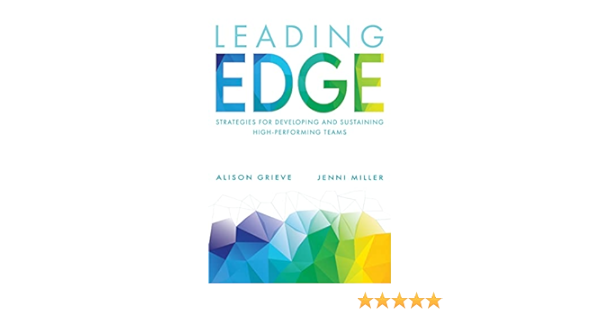
When we first started thinking about high performance, we found there were over 5,000 research papers on teams, all with different perspectives. So, we decided to narrow down our focus to what was critical for the success of not just any team but a high-performing one. What gives a high-performing team an edge? We really wanted to differentiate between a good and a high-performing team. From this, we distilled the research into the core factors of high-performing teams, which we call Edge Dynamics.
Understanding the Edge Dynamics framework
The Edge Dynamics are Reason, Results, Routines, Relationships, and Resilience. These Edge Dynamics interact and support each other to create a sustainable, high-performing team. The framework is simple without being simplistic. It’s a practical, intuitive methodology for you to work with so that you can take a team to the edge of their potential and beyond.

- The reason is the teams’ why. Without it, the team has no purpose – nothing to guide it towards where it needs to go.
- Results are what the team is accountable for delivering together. Without this, there can be duplication of effort and, at best, mediocre performance with an individual focus in a team.
- Routines describe the team’s ways of working, its rhythms, and how the team members keep each other informed and make decisions.
- Relationships are what it feels like to be a part of this team and how team members work with and interact with each other.
- Resilience shows the energy levels of the team, learning from experiences to continuously improve and reviewing and refreshing all the Edge Dynamics regularly to anticipate and respond to changes.
Routines, Relationships, and Resilience together create how the team is going to achieve all of this. Each of these Edge Dynamics is essential – without one, it’s impossible to fulfill the potential of the other Edge Dynamics, which means that high performance is unlikely to be achieved or very difficult to sustain.
Where to start?
One of the most challenging aspects of team development is knowing what to focus on with the team at any given time. Teams are complex systems, and there are so many different areas that you could work on either as the leader, team coach, or facilitator. The only way to know where to focus is to do some kind of diagnosis.
People often ask us, ‘Where do I start when developing my team? Which Edge Dynamic has priority?’ Through our extensive work with teams, we found that many teams have previously worked on one or two of the Edge Dynamics, such as Relationships or Routines, and yet they were missing the most important piece of the puzzle, which is that a team needs to work on all of the Edge Dynamics to get to high performance. You’ll definitely improve the performance of the team by working on one or two Edge Dynamics, but to really get to that high performance and sustain it over time, you need to harness all of the Edge Dynamics together. This is because they work in an integrated way, supporting each other.
Diagnosing your team’s edge
So why bother diagnosing a team? Well, there are compelling reasons for doing a regular diagnostic of the Edge Dynamics. A diagnostic helps to make something that’s rather subjective (in other words, how it feels to be a part of this team) into something much more tangible and data-driven.
Without a diagnostic, you’re working with people’s opinions, and the danger is that the loudest voice in the room is the one that’s heard while other voices get silenced. It can be hard to establish what the team as a whole really thinks. Using a research-based, anonymous diagnostic linked to what really impacts performance as a team enables you to focus and be confident that what you’re working on will deliver and support the team in its objectives.
You can carry out an informal diagnostic using the coaching questions you’ll find below.
- How clear is the team on what the team’s purpose is?
- Can the team members articulate the team’s purpose to others?
- What’s the team accountable for delivering?
- How clear is the team on the team’s accountabilities?
- What are Relationships like in the team?
- To what extent is constructive challenge a habit in the team?
- How well do the team’s Routines serve the team right now?
- Who makes most of the decisions in the team?
- How does the team anticipate changes that affect the team?
- How are the team members’ energy levels right now?
Regular diagnostics are key
The first diagnostic that you do will give you a baseline for your team. Where’s your team right now against each of the Edge Dynamics, and what should the priority be for your team? Diagnosing your team also helps you prioritize the action you and your team take in developing your team towards high performance. There are lots of factors that contribute to high performance in teams, and every team is different, so knowing where to start is crucial, otherwise, you and the team can get overwhelmed very easily and achieve little.
Don’t stop there, though! Once you’ve taken some action for your team, we would suggest you use your chosen diagnostic tool regularly to measure and review progress. As already mentioned, it’s an ongoing practice to get to high performance and to sustain it. The team is constantly shifting and adjusting and you need to know what has changed so that you can adapt to it. Regular diagnostics will also help you celebrate successes see the progress your team is making against Edge Dynamics, and to diagnose and identify what you should focus on next. Every three months is a good rhythm to create to check in with the team on how things are going against Edge Dynamics. It also keeps pace with any changes and shifts that are going on in the general context.




